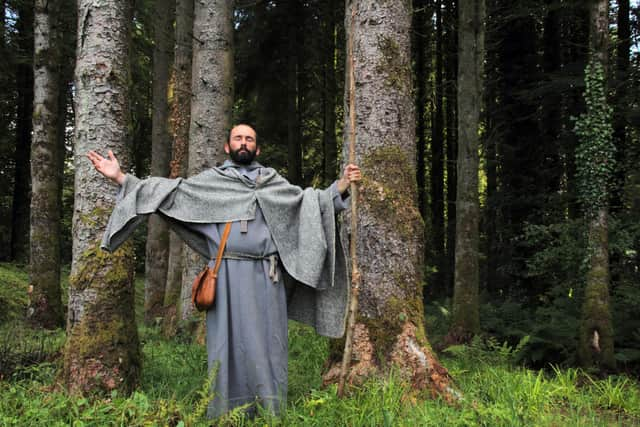St Columba: Poet, warrior, religious upsetter..tamer of the Loch Ness monster?
A new documentary, Calum Cille: An Naomh Dàna or Columba: The Bold Saint, looks at the effect the saint’s profile – much of it created long after his death – has had on both Scotland and Ireland.
Piecing together accounts by Adomnán, the abbott of Iona who wrote Vita Columbae 100 years after Columba died, the documentary charts the powerful stories that have surrounded him.
Advertisement
Hide AdAdvertisement
Hide AdThey start with Columba’s birth into Irish royalty on a flagstone at Gartan in Donegal to his exile from Ireland following a supposed battle over the copyright of a book of psalms to his arrival on the west coast of Scotland, where he founded a monastery on Iona.


Iona, where he lived for 30 years, became one of the most important centres of the Early Middles Ages – akin to Florence or Athens – and which was at the forefront of arts, science, politics, religion and literature.
Dr Duncan Sneddon, of the School of Celtic and Scottish Studies at the University of Edinburgh, said: “There’s a difference between Columba the man who lived on Earth and the historical figure who was recreated in the generations after his death - and they all create their own Columba. But they all tell us something important. They all put together a Columba who was powerful, brave and important in different ways.”
Among Adomnán’s tales is the story of St Columba travelling to Pictland, where he tamed the Loch Ness Monster, with the account the first written record of the beast who still lingers in imaginations today.
Adomnán wrote: “The brute lay asleep in the river bed, waiting in his lair. He ascended to the surface and with a loud roar from his open heart, he lunged at the man.
"The Holy Man raised his hand and made a sign of the cross. At the sound of the saint’s voice, the brute retreated so quickly, it seems as if were pulled by a rope. The local pagans were so astonished at the miracle they had just witnessed, that they fell under the spell of the Christian God.”
The documentary, which will be broadcast simultaneously on BBC ALBA and TG4 on December 7, also explores how Adomnán’s writings on St Columba were then used to promote the abbot’s own spiritual and political standing.
In one story, the abbot tells of a warrior killing a little girl as she sheltered under a young Columba’s cloak, with the killer then cursed and his sword going to hell. Adomnán went on to write an international law to protect women.
Advertisement
Hide AdAdvertisement
Hide AdGilbert Márkus, researcher and author on Medieval Church history and place names, said: “I wouldn’t say that Adomnán completely made it up but quite possibly he did. The real point of the story is to support Adomnán’s claim a century later that Iona has a special job to protect women.
He added: “The triumph of Columba’s memory is a triumph of Adomnán writing more than anything else. It’s Adomnán who gives us a portrait of Columba and Iona which is the foundation of everything that comes afterwards.”
Dr Niamh Wycherley, of the Departmennt of Early Irish at Maynooth University, said it was arguably St Columba’s “great swathe of ecclesiastical foundations” across Ireland and parts of western Scotland, were his most important legacy.
She said: “Iona of course was his primary foundation, the one he’s most rightly famous for. However he also founded other major ecclesiastical institutions – Kells and Durrow. These primary foundations of Colmcille produced some of our most precious and famous historical artefacts - the Book of Kells, The Book of Durrow, early collections of the Irish Annals. These are incredibly important texts in their own right, but also physical objects.”
A message from the Editor:Thank you for reading this article. We're more reliant on your support than ever as the shift in consumer habits brought about by Coronavirus impacts our advertisers.
If you haven't already, please consider supporting our trusted, fact-checked journalism by taking out a digital subscription.
Comments
Want to join the conversation? Please or to comment on this article.
